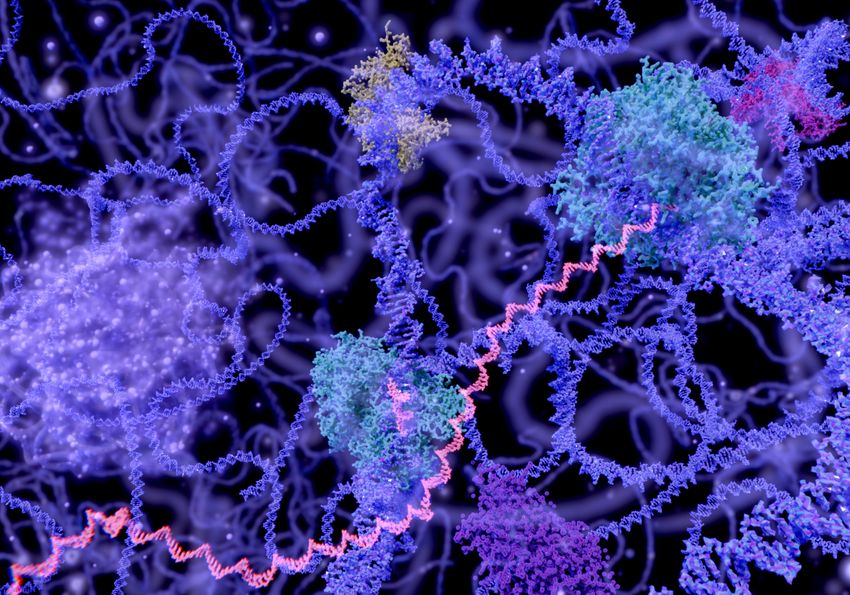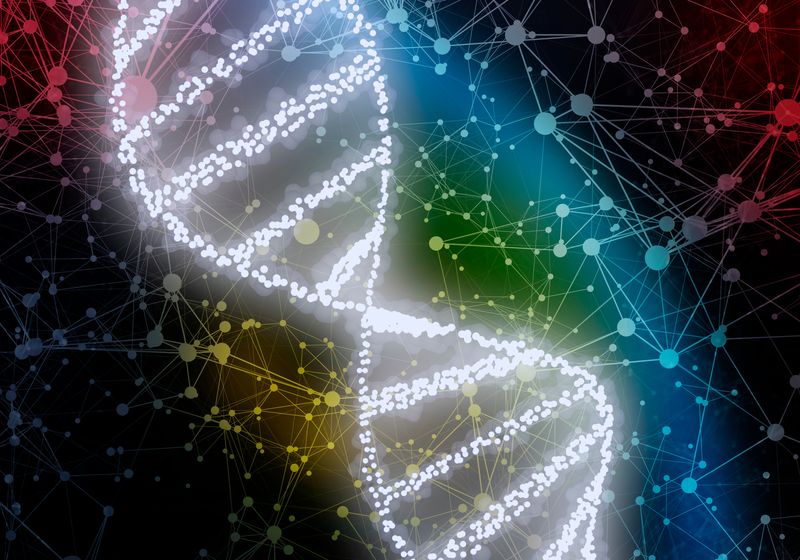The genome is more than a linear code; it is a dynamic structure whose three-dimensional folding dictates how genes are regulated. Traditional sequencing technologies capture base-level variation but miss the architectural context that determines functional impact. By integrating sequence data with spatial genome mapping, researchers can detect structural variants, enhancer hijacking events, and other regulatory disruptions while interpreting their biological consequences.
Mathew Easterday Chief Executive Officer Dovetail Genomics
In this Innovation Spotlight, Mathew Easterday, the chief executive officer of Dovetail Genomics, discusses the importance of combining DNA sequence and structure analysis in a single assay. Dovetail Genomics’ LinkPrep™ technology allows researchers to read both the genetic code and its 3D organization, enabling the detection of structural variants that conventional sequencing often misses.
Why is spatial genome architecture so critical for understanding gene regulation and disease?
The genome is not merely a string of bases; it is deliberately folded in three dimensions inside the nucleus. This folding determines which genes can “see” regulatory elements, such as enhancers and silencers, and which genes are tucked away and inaccessible. In cancer, this 3D architecture often goes awry: enhancers can be rewired to aberrantly activate oncogenes (enhancer hijacking), or tumor suppressor genes can be silenced by altered domain boundaries. Crucially, many of the underlying lesions are large structural variants (SVs), such as translocations, inversion, duplications, and deletions, that standard short-read sequencing often misses or cannot mechanistically interpret. By directly measuring 3D genome contacts, researchers can detect these events and read out their regulatory consequences, connecting genotype to transcriptional misregulation in the same experiment.
How has Dovetail Genomics set itself apart from other sequencing technologies?
Today’s sequencing platforms read bases. Dovetail’s technology reads bases and how those bases are organized in space. This yields long-range information at genome-wide scale without specialized equipment. The result is a combined view that does several things.
It reveals large SVs with short reads. Discordant long‑range contacts expose translocations, inversions, complex rearrangements, copy number changes, and domain boundary disruptions that can be invisible to conventional fragment‑sized libraries. It also explains function. Because the same data map enhancer–promoter contacts and topological domains, researchers can see whether a detected SV actually rewires regulatory circuitry, such as placing a super‑enhancer into the orbit of an oncogene. And it unifies sequence and structure in a single dataset. From a single short‑read library, Dovetail’s technology captures the same primary sequence information as standard next-generation sequencing (NGS) technology, such as single nucleotide variants, indels, and copy number variants, and adds genome‑wide, long‑range contacts enabling phasing across megabases and sensitive detection of complex structural variants with precise breakpoint resolution. Together, this yields a single‑assay genome view: primary sequence, long‑range structure, and functional impact.
By using proprietary linked-read methods, Dovetail’s technology delivers long-range genomic interaction data at a resolution that other sequencing approaches cannot achieve. This combination delivers a comprehensive picture of genetic variation and the mechanisms by which those variants drive disease.
What is the Dovetail workflow?
Dovetail’s workflow starts with intact cells. Using a combination of crosslinking, enzymatic digestion, and DNA proximity ligation, DNA segments that are close in 3D space are captured as chimeric pairs. These chimeric pairs are then sequenced on standard NGS platforms, most commonly Illumina although the technology is broadly compatible with all short read sequencing platforms. Then, computational pipelines reconstruct the spatial relationships. The same dataset supports conventional variant calling, SV discovery, which is often missing from standard NGS datasets, and genome‑wide 3D mapping, eliminating separate long‑read or cytogenetic workflows in many applications.
Dovetail’s technology stems from traditional chromatin conformation methods such as Hi-C. However, these traditional methods are complex, time-consuming, and technically demanding. Using an approach driven by a tagmentase enzyme, Dovetail’s LinkPrep™ Kit streamlines these steps into a more reproducible and faster workflow, reducing the need for highly specialized expertise. This efficiency lowers the barrier for adoption in labs that want high-resolution structural data without committing massive resources.
Early this year, Dovetail Genomics announced early access services for formalin-fixed paraffin-embedded (FFPE) sample analysis. How will this service move cancer research forward?
While FFPE samples are an important sample source for clinical biopsies, they are notoriously challenging for standard genomic assays due to nucleic acid degradation. Through minor modifications to our workflow, Dovetail Genomics now enables researchers to unlock genomic information from the vast archives of FFPE samples already collected. This means that scientists can revisit thousands of stored cancer tissues, unlocking previously inaccessible genetic information, and correlate variants with clinical outcomes, accelerating biomarker discovery and therapeutic target validation.
How does artificial intelligence enhance interpretation of the high-resolution data your assays generate?
Artificial intelligence helps researchers quickly interpret the role of genetic variants within the context of genome structure. In oncology, this includes identifying when a variant causes enhancer hijacking, where a powerful regulatory element is mis-wired to activate an oncogene. By highlighting variants most likely to drive these kinds of misregulation events, AI-guided analysis enables scientists to zero in on the mutations that have the greatest impact on tumor biology and treatment response.

AI-guided analysis of structural genomics highlights DNA variants that affect genome structure and cause errors in transcription.
©iStock, selvanegra
AI also plays an important role in genetic variant discovery and annotation. Many cancer-associated variants identified through genome sequencing or genome-wide association studies (GWAS) fall outside of coding regions, leaving their functional impact uncertain. By integrating spatial genomics with AI-driven analysis, Dovetail’s platform can connect these variants to their true regulatory targets. This transforms statistical associations into actionable insights for biomarker discovery and therapeutic development.
In practice, this means that cancer researchers can more confidently interpret variants, prioritize targets, and uncover hidden mechanisms of disease, while saving time and resources compared to legacy methods. Similar approaches are being applied in neuroscience and rare disease research, where enhancer hijacking and other regulatory disruptions play equally important roles in disease mechanisms.
How are researchers in fields beyond cancer using Dovetail’s technology?
Neuroscience researchers are especially interested in spatial genomics because brain cells rely on intricate regulation of large gene networks to control development and synaptic function. Rare disease research often deals with structural variants, such as insertions, deletions, and inversions, that can disrupt 3D folding. Dovetail’s technology provides the crucial context to interpret these changes by revealing whether a variant physically separates a gene from its enhancer, offering a direct mechanistic explanation for disease biology.
This capability also makes Dovetail’s approach invaluable for annotating GWAS signals. Most GWAS-identified variants fall in non-coding regions, leaving their functional impact ambiguous. By mapping chromatin interactions, Dovetail can connect these variants to their true regulatory targets, bridging the gap between statistical associations and biological mechanisms.
In neurodevelopmental disorders, researchers have used Dovetail’s technology to demonstrate how disrupted chromatin loops in neuronal precursors mis-wire gene regulation. This not only explains why certain mutations cause profound cognitive effects but also demonstrates how GWAS hits in intergenic regions can be linked to the specific genes and pathways they influence.
What’s next for Dovetail Genomics?
We are focused on scale and integration: expanding kit and service offerings, including FFPE, refining AI‑driven analytics for SV detection and regulatory impact scoring, and streamlining end‑to‑end workflows so that 3D‑aware variant analysis becomes routine. As laboratories adopt this combined sequence‑plus‑structure paradigm, the field moves from cataloging variants to understanding and acting on the mechanisms by which those variants cause disease.


